[~ 10 minutes]
Listening to: Brooke Fraser, Scarlet
O my Luve’s like a red red rose
That’s newly sprung in June— Robert Burns
I. Hortus conclusus
There’s a rose garden I know, a garden I haunt on occasion.
It’s not particularly large; close to the sea, girdled with a stone wall that turns it into a modern day variety of hortus conclusus, only with no virgins in sight.
Many roses grow there, some old, some new. I have no names for most of them—or, rather, I do have a list of names provided by the owners, beautiful names like Gloire de Dijon, and Cymbeline, and Cuisse de nymphe. However, with rare exceptions, for the most part I struggle to attach name to bloom.

My triumphs are few, but taste sweeter than nectar. I’ve been delighted by the scent of a Rosa rugosa cultivar in delicate shades of creamy vanilla, its stems aggressively covered in countless thorns.
I recognise the rambling banksiae roses both yellow and white, draping themselves over stone arches and trees. I’ve finally met the Macartney rose (Rosa bracteata), its lush green foliage the perfect background for gorgeous white blooms with a gilded, sun-like centre.
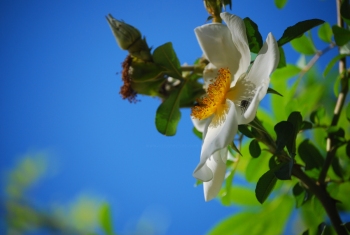

I have fallen a little in love with a rose I haven’t yet identified, a bush covered in slightly tousled yet supremely elegant dawn-rose blossoms that seem to glow in shadow:

I have begun haunting this garden of late.
Every week I pilgrimage there, camera in hand (and long-suffering husband in tow, poor thing), and spend a few hours inside a small universe made out of blossom, leaf and rose-hip.
 I spend time observing flowers, and the busy insects greedily diving into the silky folds of centifolia-like blooms.
I spend time observing flowers, and the busy insects greedily diving into the silky folds of centifolia-like blooms.
I spend time observing people that walk among the flowers, too.
Clusters of tourists, speaking English, and German, and Spanish. Wandering around the rose bushes and irises and columbines abloom.
I hear the children laugh, some husbands complaining (would you please stop taking pictures of the kid already? This is boring). Elderly couples on vacation that smile as they walk past the funny girl shooting pictures at some flower (at all flowers, actually).
Some of the conversations I cannot understand. But I have seen people take out their smartphones every now and then, to take a snapshot of a rose.
The curious thing though was this: it was always the same rose.
In a garden with over 20 varieties in bloom, the one people took pictures of was the low-lying, long-stemmed, big-blossomed red one.
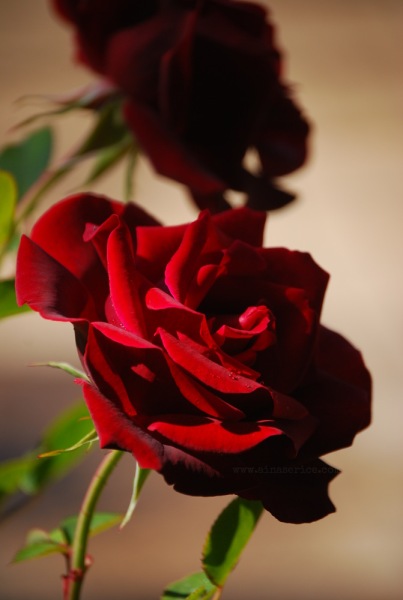
Yes, it’s a velvety deep red that fairly makes your fingertips itch with want to touch it, a scarlet red that would make little Red Riding Hood weep with envy.
It’s the mother of all reds, and —hey, I get it. I adore that colour myself, and I shot a good eight pictures of that blossom.
But I wonder…
… why the absolute inattention to all others?
I saw nobody marvel at the dainty peach and strawberry cream blossoms near the entrance, nobody caress the luscious cerise purple roses nodding next to them.


 I saw nobody stop and stick their nose into one of the rugosa‘s vanilla blossoms and smile with the sheer joy of having its perfume seep into their thoughts, nor rub their leaves and feel the sticky aroma cling to their skin.
I saw nobody stop and stick their nose into one of the rugosa‘s vanilla blossoms and smile with the sheer joy of having its perfume seep into their thoughts, nor rub their leaves and feel the sticky aroma cling to their skin.
Because different rose cultivars do smell slightly different, and yet I saw no one getting up close and taking the rose scents in.
The depths of beauty flattened to a single, lonely sense.
Perhaps our roses lost their scent because we stopped smelling them, we stopped caring. Or perhaps we do not smell them because we expect them to have no scent at all. It’s enough for them to be pretty to look at, preferably scarlet.
I find this to be rather sad. Because it’s true, that roses are red— as well as violet, and creamy yellow, and peach-coloured, and porcelain-white and dusky rose.
Sometimes their colours even blend and evolve as days tick by, as in the old China rose mutabilis that unfurls in dark copper, then pales and blushes to faint pink before gaining the mature intensity of deep rose:
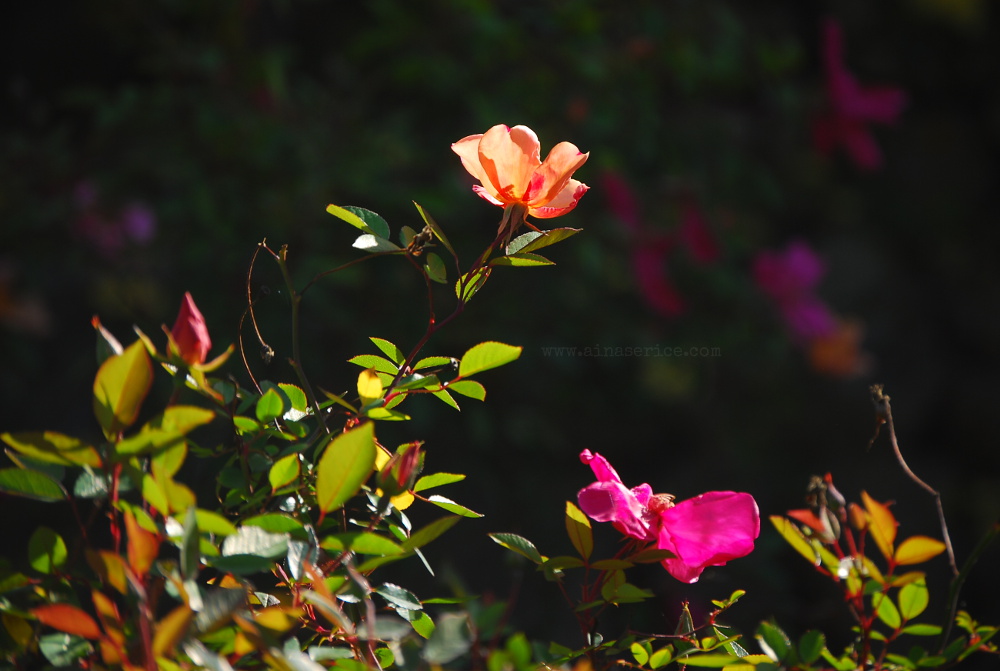
Roses are not only red.
Roses are also red.
II. Rosarium: between imagination and reality
Humans have poured their feelings onto roses for millennia.
In the West, the symbolism and cultural constructs around these flowers has been accumulating at least since the Greeks and the Romans. Christianity added further layers of meaning to the known roses of the day; after being regarded with suspicion by the early Church, roses were co-opted as the most perfect of flowers, a symbol of divine love… and soon, of earthly, courtly love as well.
Collections of love songs, devotional hymns and prayers began to be called flower gardens*—or, most commonly of all, rosariums: rose gardens.
*Wherein comes our word anthology, from anthos (flower) and –logia (collection, selection).
However, there weren’t many actual rose kinds available to bedeck real, not metaphoric, gardens…
Rose gardens were a relatively late development in the history of gardening. Roses were —of course— present and even prized among the many plants cultivated for pleasure, but there was simply not enough variety of them: when the Society of London Gardeners published their catalogue in 1730, they listed no more than 43* roses as “available to the public and recommended for being intermixed with flowering trees and shrubs in small wilderness quarters”.
*Compare with the estimate figures (800!) for named varieties of tulips in the Netherlands in the 1720s. A tulip garden would’ve made a lot more sense if you wanted to impress somebody…
There are over 100 wild species of Rosa spp, sprinkled across the Northern hemisphere (Asia, North America, Europe, and NW Africa). They have delicate five-petalled blooms, and most of them flower ephemerally, only once a year. This fugacity has charmed the poetically-minded for centuries, and frustrated gardeners probably for just about as long.

With the passing of time, some hybrids arose naturally, such as the heavenly scented Damask rose (Rosa damascena), or the cabbagesque (in form, not in aroma) centifolias.
More time passed; commerce happened; the discovery of ever-blooming Chinese roses happened.
R. chinensis had been cultivated for centuries in China, with many varieties in existence: most of them were pink- or red-petalled, and scented. This rose apparently reached the West in the 15th century, possibly via Iran*, but it wasn’t until the 18th that interesting things began to happen in Rose-land (or, rather, in Rose-terre, as ’twas France that spearheaded many of these developments). Nurserymen discovered how they might cross different rose species and cultivars, and rose breeding began in earnest, combining the sempiternal blooming habit of Chinese roses with other roses’ desirable traits.
*another rose-mad country.
And breed they did —so much so, that hundreds of rose varieties soon could take over an entire garden if the owner so desired it.
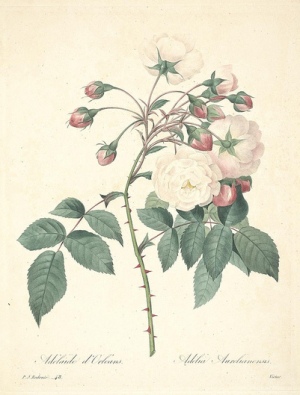
By 1814, Napoleon’s first wife and eager rosarian, Josephine de Beauharnais, could boast a rose garden with well over a thousand varieties at Malmaison. Many were exquisitely painted by the so-called “Raphael of flowers“, the Belgian painter Pierre-Joseph Redouté (who had been painter to Queen Marie Antoniette’s Cabinet before the French Revolution, and later on became Josephine’s official painter).
His three-volumed oeuvre Les Roses is a delicate and wonderful compendium of rose-lore that encapsulates the thrillingly wide variety of forms that the queen of flowers could be coaxed into adopting.
III. The hundred meanings of a rose
In 19th century dictionaries of the so-called ‘Language of Flowers’, the meanings ascribed to roses were many and varied.
Roses in general (Rosa spp) were (predictably) associated with the concepts of “Beauty” and “Love” that we have inherited.
However, recall that the times saw a proliferation of roses —wild species come from afar and cultivars bred to perfection by nurserymen. They came in many colours and scents, from apples (eg the leaves of the briar rose, R. rubiginosa) to crushed tea leaves (the China tea roses, hybrid offspring of R. gigantea and R. chinensis).

Needless to say, the meanings attached to these flowers could multiply accordingly.
Sometimes you could spell out your heart’s desires using different rose species: eg. Carolina roses (Rosa carolina) were taken to mean “Love is dangerous”; briar rose meant “Poetry”, or “I wound to heal”; the cabbage rose (R. centifolia) was an “Ambassador or love”, the China rose (Rosa chinensis) meant “Beauty always new”, and Japanese rose (R. rugosa) meant, alas, “Beauty is your only attraction”.
However, for those less botanically inclined (or botanically savvy), one could compose messages depending on the roses’ colour and stage of maturity. Yellow roses stood for ‘Infidelity’, red ones for love —although deep red was “bashful shame”—, and white rosebuds were for “Girlhood”.
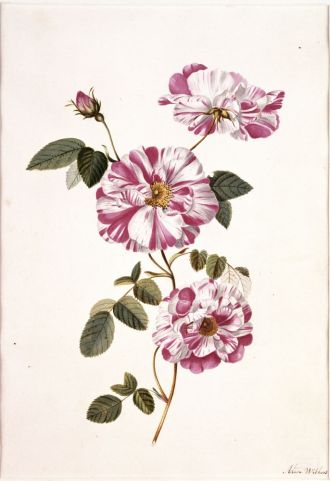
Roses, both metaphorical and real, swelled to nigh-encompass the whole world of flowers in the West, and the meaning bestowed upon the variegated old gallica Rosamundi became a prophecy fulfilled.
Variety.
An intimidatingly vast, wide-ranging variety of roses in all the colours of the rainbow.
However, their elaborate meanings have been lost like autumn leaves, and never recreated collectively.
Sadder yet, we have a plethora of roses that are very pretty to look at, but which most of us have forgotten how to smell.
Footfalls echo in the memory
Down the passage which we did not take
Towards the door we never opened
Into the rose-garden
… for the roses
Had the look of flowers that are looked at.— T. S. Elliot, ‘Burnt Norton’.
(last verse italics mine)
Next step: become a rose sniffer! I’m doing my best to re-train my default approach to roses, and smell all the blossoms I encounter. There is a growing tide, a cultural shift towards rescuing the pleasure of sweet-smelling roses, and there is no better way to join it than to stick your nose into the next rose you come across.
![]()
References&Resources
 (This was supposed to be a quick, painless, bibliography-less article. Sigh. I don’t know why I even try. But I swear I exercised great source-restraint.)
(This was supposed to be a quick, painless, bibliography-less article. Sigh. I don’t know why I even try. But I swear I exercised great source-restraint.)
– The rose garden I haunt is part of the Museu Sa Bassa Blanca, Alcúdia, created by Yannick and Ben Yakober.
– A book on roses that I mildly enjoyed was A History of the Fragrant Rose by Allen Paterson. However, I closed it feeling as lost in the rose wilderness as I had been before reading it. One thing it did though was introduce me to the Macartney rose.
– On the ancient history of roses, there’s information in Jack Goody’s The Culture of Flowers (and the aforementioned book by Paterson). On Christianity co-opting roses after their initial suspicion (more or less like what happened with olibanum!), I consulted Teresa McLean’s Medieval English Gardens, where she dedicates an entire section to the development of rose symbolism and rose worship in the West.
– Information on the amount of rose varieties in 1730s’ London comes from David Stuart’s book, The Plants that shaped our Gardens, as does the number of rose varieties at Malmaison by 1814. The number of named tulip varieties I cite, I got from a reference to Wright, R. The Story of Gardening: from the Hanging Gardens of Babylon to the Hanging Gardens of New York published by Dodd, Mead & Company (NY, 1934). The citing source was Dehgan, B. Public Garden Management: A Global Perspective, published in 2014 by Xlibris.
– Number of wild rose species comes from Vukosavljev et al, 2013. Genetic diversity and differentiation in roses: A garden rose perspective. Scientia Horticulturae 162: 320–332. Excellent synoptic table on some garden rose origins.
– On the varied meanings of roses in the so-called “Language of Flowers”, I consulted the amazing volume by the The RHS Lindley Library (Occasional Papers from the RHS Lindley Library Volume 10 (April 2013), The Victorian Language of Flowers).
– Now, rose scents lost&found have been at the centre of rosarian news these past years. Apparently, we have discovered the genes involved in the production of scent in roses. Here’s more on the subject.
– I’ve also been reading tips about rose care, as I’d like to slowly invite more non-cliché, scented roses into the garden.
Illustrations
Redouté’s rose illustrations come from his oeuvre Choix des plus belles fleurs (…), freely available via Biodiversity Heritage Library.
The Rosa mundi illustration is taken from Wikipedia.
All other pictures are by Yours truly, taken at Sa Bassa Blanca on April 2017 (save for the shot of R. multiflora, and the shot of R. bracteata, which was abloom last November)
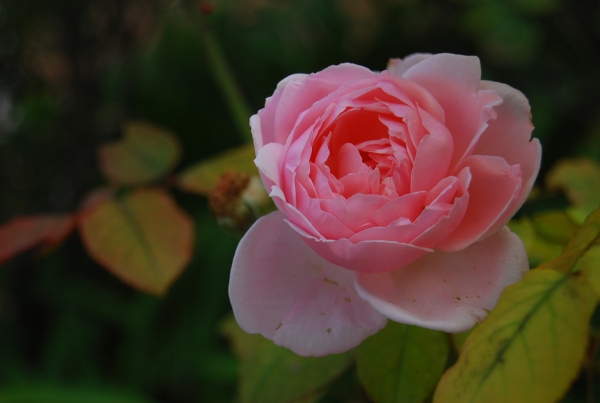


One thought on “Beyond the red rose: a walk in a rose garden”